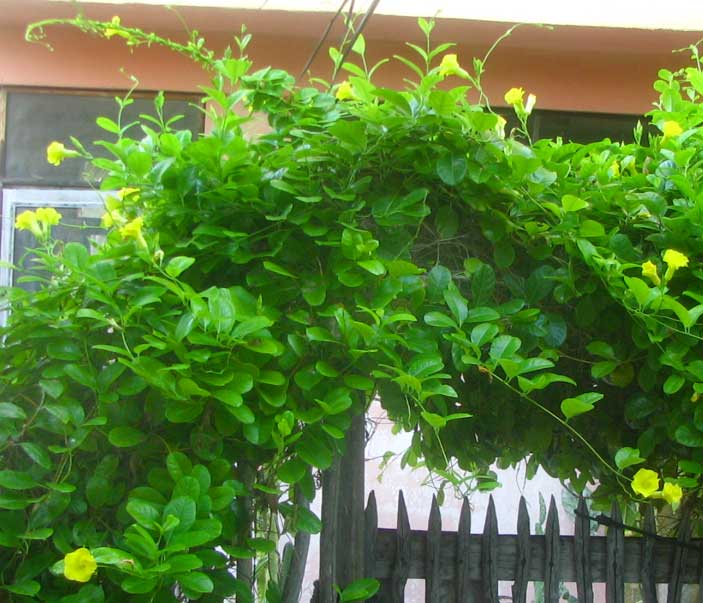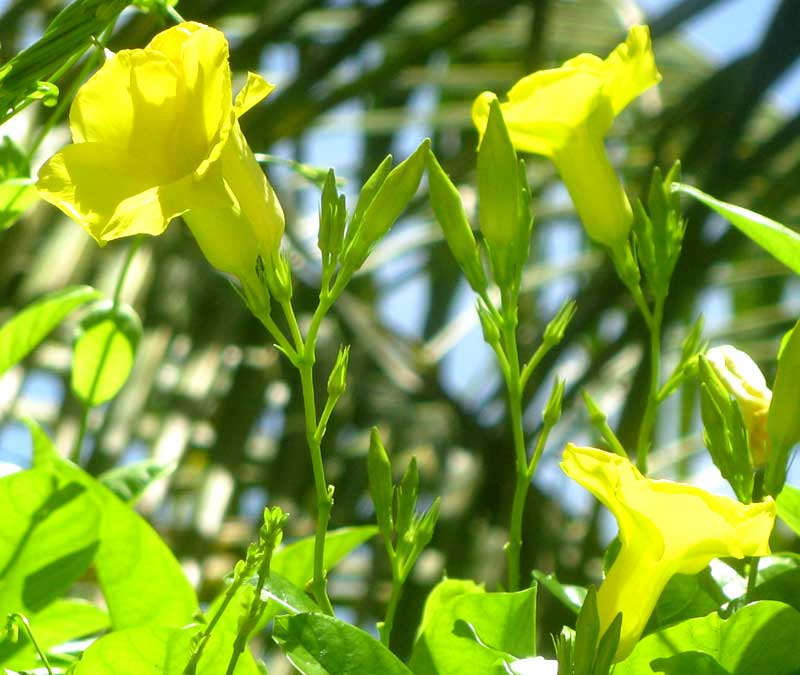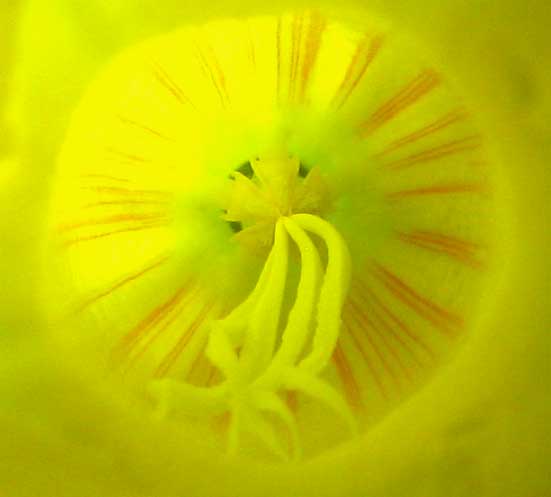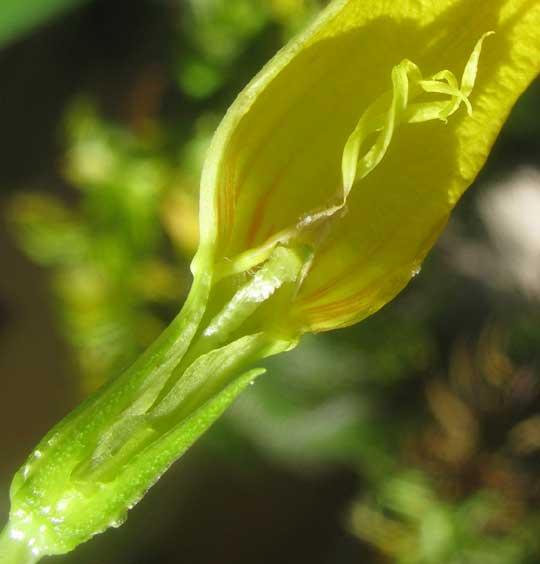Excerpts from Jim Conrad's
Naturalist Newsletter

from the September 11, 2011 Newsletter issued from Mayan Beach Garden Inn 20 kms north of Mahahual; Caribbean coastal beach and mangroves, ~N18.89°, ~W87.64°, Quintana Roo state, MÉXICO
YELLOW-FLOWERED VINE WITHOUT A GOOD NAME
Several times daily I duck below a luxurious mass of densely tangling vine overgrowing the beam above the gate leading to the kitchen. The vine bears large, yellow, trumpet-shaped flowers. That's it above. A close-up of the 2.5-inch long (6cm) flowers is shown below:

There's a commonly planted, similarly robust vine with similarly trumpet-shaped, yellow flowers planted throughout the world's tropics (next section), often called the Golden Trumpet Vine. The kitchen gate vine is something else. The evidence for that is shown below:

That's a view down the throat of one of this vine's flowers. The corolla tube is yellow with narrow, red lines radiating from the center, exactly as with the Golden Trumpet Vine, but what are those yellow, curly things lying on the throat's floor? In the next section we'll see that they're completely missing in Golden Trumpet Vine flowers.
Each of those five curly things arises atop one of five anthers. They are "anther appendages" and I'm guessing that they provide footholds for visiting pollinators. Like the red lines, the appendages also serve as nectar guides pointing toward access to nectar at the flower's base. In a blossom's longitudinal section you can see how the anthers join like a tepee over the blunt stigma head, with the curly appendages arising from their tips, below:

The vine is PENTALINON LUTEUM, and if you need a commonly accepted English name you're out of luck. Lots of names can be found for it but none seems more used than any other. There's Yellow Mandevilla (though it's not a Mandevilla), Yellow Dipladenia (not a Diplandenia), Wild Allamanda (not an Allamanda), Lice Bush, Wild Wist, and then there's the USDA's Hammock Viper's-tail.
As is often the case with members of the Dogbane Family, all parts of Pentalinon luteum are poisonous if ingested, and even handling can cause skin irritation.